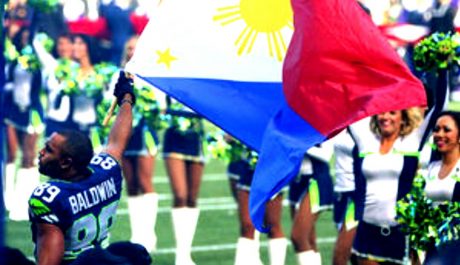
According to the article The marginalization of Brown Asians published recently on the Seattle Globalist, this is a perception begging serious consideration. The following excerpt from this article captures the all-too-familiar lament with regard to how “under-represented” Filipinos think they are as Asian-Americans…
We are tired of the fact that when people think of Asian Americans, they seem to always think of East Asians — Chinese, Koreans, or Japanese. We’re tired of the fact that when people think of getting the Asian American perspective, Brown Asian experiences are not included or if even considered, disregarded. We are tired of being forgotten and being treated as if we are invisible!
The author then conducted “a simple research” across several major media outlets to test this perception. According to her findings, “Brown Asian stories are not covered enough” in the media and, on that basis concludes:
[…] our hunch — the feeling that we are often treated as if we are second-class, perhaps even third-class, Asian Americans — seems to be correct.
On the back of that comes the author’s rather predictable call to action:
We want to be represented in media so that our realities and experiences, struggles and victories, pains and joys — a more complete and nuanced portrait of us — can be shared with society.
Now here’s the confronting question I’d like to ask:
Are “Brown Asians” interesting enough to be given the media mileage they believe they are entitled to?
The thing with media distribution as a business is that the content the industry produces and disseminates reflect the character of the free market. In short, when prioritising investment in the production of media products — television, cinema, online content — business managers will, of course, place importance first in what will attract the biggest audience.
To get a better chance of being in that priority list, therefore, the call to action to “Brown Asians” should be this:
Compete for public attention.
Again, attracting public attention involves making one’s self interesting to ageneral audience. This can be done in a number of ways:
(1) Do something that can’t be done by the average schmoe.
(2) Rack up a portfolio of categorical achievements.
(3) Differentiate yourself.
Filipinos need to ask themselves:
Have we, as a people, anything to collectively show along the above lines?
Dancing the tinikling, for example, makes for quaint “cultural awareness” exercises fit for a small patronising audience. But such cultural delights cannot compete with the awesomeness of rocketing men to space, catapulting Gangnam Style to the Viral Videos Hall of Fame, inventing a longer-lasting lightbulb, telling mind-bending stories using big-eyed girls in short sailor suits, or creating an entire fictional universe of humanoid robots.
Filipinos may express how much they “want” to be proportionately represented in pop media ’til the cows come home. But in the reality of a free market where everyone competes for the same finite set of ears and eyeballs, simply wantingsomething does not deliver results.
This is a lesson Filipinos need to learn — that fame, fortune, and everything that makes life awesome is earned on the back of being clever, creative, and, well,awesome.
So are Filipinos awesome enough to compete in a world that loves anime, Hollywood, Bollywood, K-Pop, and Medieval magic, gore and debauchery?
Let the collective soul-searching begin.

No comments:
Post a Comment